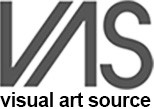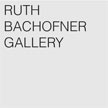Michel Alexis' artwork is founded on an interface between painting and writing, where canvases hold impressions of his surrounding urban environment. In his earlier work, Alexis appropriated actual text from poetry and other writings. He continues to explore the written word in his current work, but in a more abstract manner, where words and letters are drained of specificity, and occupy a strictly formal space. Alexis distills actual text into linear movements across textured surfaces, echoing the motion and form of writing.
As Alexis adapts the physical act of writing, he creates his own distinct visual vocabulary. Improvisational gestures of sweeping, calligraphic marks are set into a loose system of geometry, formed through a buildup of paint, paper, burlap and other textural material. These jostling rectangles wrinkle and crease as they abut one another, or shift to reveal fissures of substrate color. While not always in harmony, layers of gesso and oil paint are made rich by contrast: at once gritty and fluid, rough and polished, forceful and placid. Alexis draws strongly on experiences of the urban environment, transferring moments, moods, hesitation and experiences of the day onto large-scale canvases.
In Absence and Eros, art critic Robert Morgan writes, "What I gather from Alexis' paintings is a sense of space whereby the linear elements function as a kind of undergarment that does not impose its sense of Eros on the body of the painting. Rather, it gently and indirectly gives the surface a distinctly erotic tone, heightening the desire to optically attend to the surface, to move into it, to become part of it."
For his first exhibition at Ruth Bachofner Gallery, Phillip Griswold brings together a series of paintings that unhinge the divide between abstraction, geometry and figuration. Griswold treats his paintings as interventions that disrupt traditional perspective, spatial relationships and figurative associations. Using scenes from urban and suburban Los Angeles, the artist consciously deconstructs and reconstructs his subject matter. He selectively dislocates perspective lines and smudges representation, ultimately arriving in an unconventional space that teems with energy, and speaks equally to sense of place and deft handling of paint.
The artist transforms uninhabited street scenes, groups of pedestrians and simple interior settings into fractured planes and geometries. While Griswold creates an intentional dissonance as areas of the picture plane are pulled taut into lozenge-shaped forms, his lush movements of paint offer a soft counterbalance within his self-generated framework. Figurative elements that represent trees, sidewalks or patches of grass dissolve into carefully orchestrated passages of oil paint or a series of intersecting geometries that dominate the surface plane, which then yield back to three dimensional perspective.
"The linear constructions", Griswold states, "originate in the lozenge shape, which has a peculiarly unique visual and art-historical resonance; while representational elements are taken from normative urban/sub-urban experience. These often include desolate streets, figurative groups, and an interplay between interior and exterior space..The interplay of these two visual structures creates a tension, which undulates between competition and harmony, moving towards resolution. This disassociation and recombination forms a new compositional whole, with a new visual resonance."
Phillip Griswold received his MFA From Claremont Graduate University and lives and works in Los Angeles.






